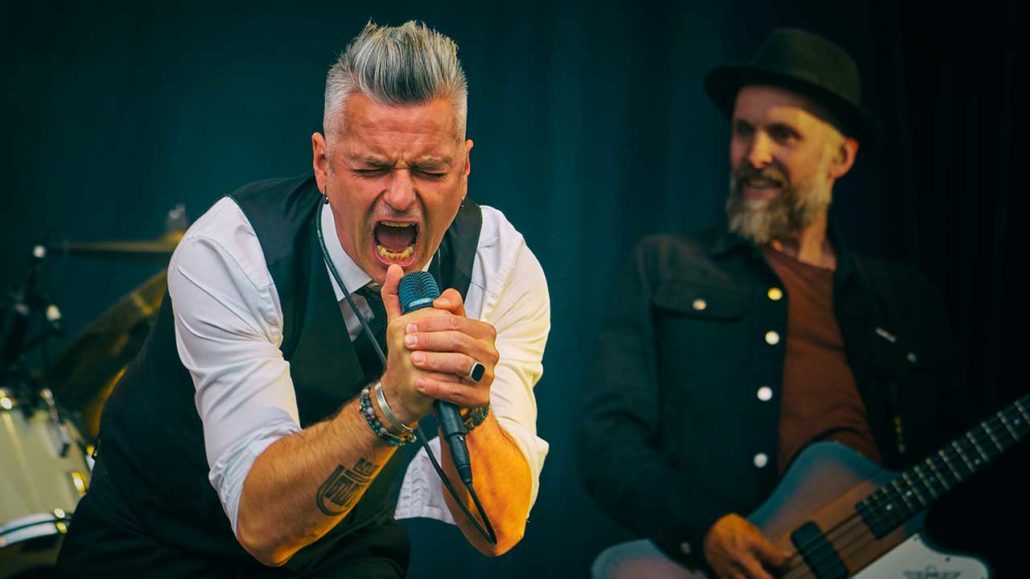
3 Demos of the Best Daily Vocal Exercise
3 Demos of the Best Daily Vocal Exercise – the Straw Phonation in Water SOVT
Two weeks ago I posted a video called “The Best Daily Vocal Exercise”. In it, I reveal that my favorite all-around vocal exercises are done with the straw phonation in water device.
This is a type of semi-occluded vocal training exercise (SOVT) and I LOVE it.
However, it doesn’t demonstrate so well. You’ll hear some of the sound and a lot of bubbles. Within the sound you don’t hear the subtleties of what I’m doing.
As such, I’ve added an information-rich introduction and I’ve tried to keep it short.
It’s more important for you to learn how I design each exercise to develop a certain sound quality I’m after or to solve a vocal problem, or to replace bad habits with good habits.
The Steps I Go Through to Build Each Vocal Exercise
STEP 1: Set My Training Objective
The training objective is usually stated as, “Develop [desired sound quality] over [partial range of my voice]”.
For example, in these three demos, my objectives are:
- To strengthen my M1 vibrational mode throughout the main 2-octave tenor range of C3 to C5.
- To develop the super high note in Gethsemane from Jesus Christ Superstar, the G5.
- To develop a lighter, breathy-smooth onset in the core center octave of the tenor range, G3 to G4.
STEP 2: Set Up My Basic Exercise Variations
The exercise variations are practical. They relate to the straw phonation device as well as the vocal scale that I’m going to use.
I need to make choices from a few variations:
- Posture (5 variations)
- Water Resistance (3 variations)
- Straw Depth (2 variations)
- Scale (many variations, see my free collections)
- Range (many variations, also in the scale collections).
STEP 3: Select the Vocalization Sound I Will Use
Because I’ve been working this exercise so much, I tend to make these decisions on the fly.
These may not make sense to you. Just know that they are important and different vocalization choices help you to better develop the sound qualities you’re after.
4 Vocalization Variations:
- Vowel Layer (2 variations)
- Vocalization Type (3 variations)
- Single or Multi-Vowels (8 choices)
- Simple Phrases (Many choices)
STEP 4: Make a Mental Note of the Fixed Core Sound Qualities
Because I’m training the core shape of my vocal tract and articulators (for the most part), there are several variable sound qualities that I don’t allow to vary.
It’s extremely important for me to hold these qualities steady when I train to correct my worst vocal problems.
5 Fixed Core Sound Qualities:
- Vocal Fold Onset: Just on the breathy side of smooth
- Tongue: Always raised and forward with a wide root (the “NG” shape)
- The “Face Lift”: Head and face muscles at medium activation levels
- Nasality: Always none (i.e. soft palate always fully raised)
- Torso Anchor: Always on the strong side of medium.
In truth, the anchoring of the head, face and torso will vary a bit on it’s own, depending on how strong or light I’m working and at what pitch range.
STEP 5: Choose My Variable Sound Qualities to Alter During this Exercise
These are the most important sound qualities in my training. I’m always cognizant of which ones I’m working to develop during an exercise.
Note that I don’t vary them all in each exercise. In fact, it’s quite the opposite. I often work hard to keep some of them fixed. An example of this might be to resist the flip from M1 to M2 when I’m doing strength training.
5 Variable Sound Qualities:
- Dynamics (Loudness): thin, light, medium, strong
- Clarity (ring, twang, Squillo, et al): none, low, medium, high
- Tone (Larynx Height): low, neutral, high
- Vocal Fold Vibrational Mode: M1 or M2
- Bridge M1 to M2: early, 2nd passaggio, 3rd passaggio, late
NOT MENTIONED: ACTION TRIGGERS
I’ve left out several important aspects of my approach to training. They are key in my approach to get better at singing as fast as possible.
I always have a short list of action triggers in mind. Action triggers are the mental images, metaphors and cues that coaches often give you to help you find the right technique.
I’ll be discussing them in future videos and they are a key part of my new series of voice building courses.
What to do Next
The first thing you want to do is to make your Nebulizer/Bubbler/Star-Maker (your straw phonation in water device!). After that, stay tuned to this blog or jump into one of my free or premium courses.
Be well and enjoy your day,






